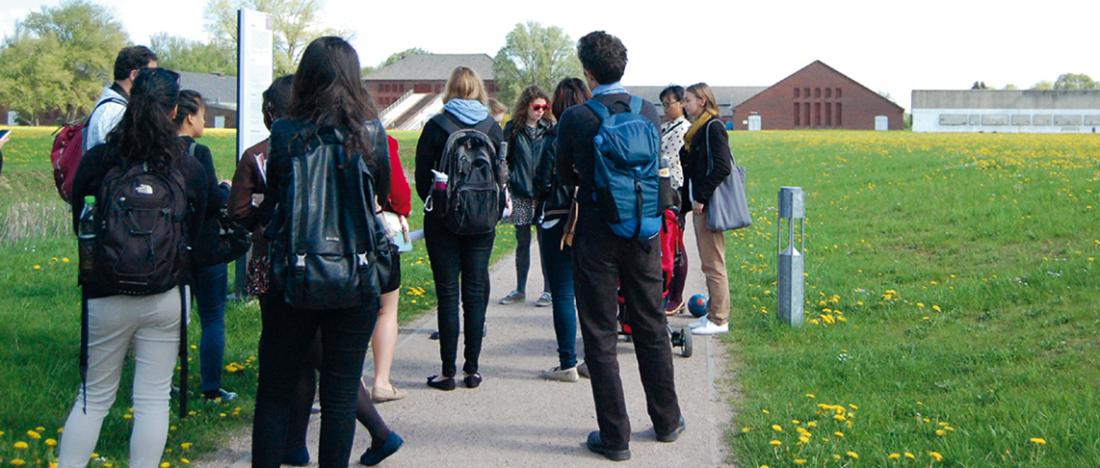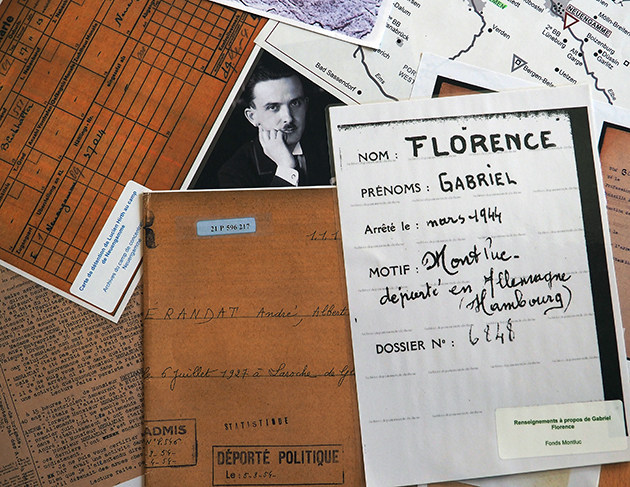Sites to be preserved and understood

From Montluc prison in France to Neuengamme concentration camp in Germany, there is a Franco-Germany history to be told, and staff at the sites work together today to ensure that this profoundly European memory is passed on and understood.
Le Montluc Prison National Memorial opened in 2010 on the site of the former penal institution, which continued to operate until 2009. Saved from demolition, Montluc prison is now a Key National Remembrance Site (HLMN) of the Ministry of the Armed Forces, managed and developed by ONAC-VG.
Montluc has a long and complex history. Alternating between military and civil justice, peacetime and wartime, throughout its period of operation from 1921 to 2009, its use during the Second World War makes it an iconic site. A prison of the Vichy regime, it was requisitioned by the German Army in February 1943, after the invasion of the southern zone. From then on, the prison became a transit site for nearly 10 000 Jews, members of the Resistance and hostages, waiting to be executed by firing squad, massacred or deported. The memorial therefore looks in detail at the mechanisms of repression and deportation, in particular for educational purposes.
In order to develop this content and professional practices, it was quickly deemed necessary for the memorial to adopt a more European focus. In 2018, Montluc Prison National Memorial devised a study trip for secondary-school history teachers of Lyon education authority, entitled De la prison de Montluc à l’univers concentrationnaire - Regards croisés sur l’enseignement de l’internement et de la déportation en France et en Allemagne (From Montluc prison to concentration camp: a comparative look at teaching about internment and deportation in France and Germany). The training course began at Montluc and continued in Germany, taking participants to the Neuengamme concentration camp and its Kommandos (subcamps), including the sites of Bunker Valentin and Bullenhuser Damm, following in the footsteps of five inmates of Montluc prison who were deported to Neuengamme.
Neuengamme concentration camp was set up in 1938 and in 1940 became an independent labour camp with 85 satellite camps. Between 1940 and 1945, more than 100 000 people from all over Europe were interned there, including around 11 500 French citizens. In 1948, the city of Hamburg began using the buildings and land as a penal institution, building two prisons on the site. In 1965, an international memorial was erected on the edge of the site, complemented in 1981 by an exhibition building. The two prisons closed in the early 2000s, and the remembrance site was officially opened in 2007, on the site of the former camp.

Archive documents showing the deportation of inmates from Montluc to Neuengamme.
© Mémorial National de la Prison de Montluc / ONAC-VG
Beyond their undeniable historical links, a whole series of scientific, heritage and remembrance bridges have been built between Montluc and Neuengamme, creating a lively educational partnership.
Beyond their undeniable historical links, a whole series of scientific, heritage and remembrance bridges have been built between Montluc and Neuengamme, creating a lively educational partnership.
A second study trip organised by Montluc in 2019 included the two memorials in Lyon and multiple partners (memorials, museums and schools, both German and French). The course, entitled La transmission de l’histoire de l’internement et de la déportation (Passing on the history of internment and deportation), shed light on one of the distinctive features of German research on the Second World War: the study of the oppressors. The seminar looked at how they are represented and used in an educational setting.
The case of Neuengamme was covered in depth, with a session of personal testimonies in four voices, in which a dialogue was created between two French descendants of deportees and two German descendants of persecutors, before an audience from the remembrance and educational spheres. These meetings, which took place at the Neuengamme memorial, offered the chance to look at the intergenerational phenomenon, and illustrated the contribution to peaceful Franco-German remembrance.
The focus on parallel and complementary educational approaches provided a crucial opportunity for questioning and innovation centred around young people. Drawing on these discussions, the Montluc memorial went on to update its educational content, designing two new workshops for school groups: one based on studies of the persecutors around the figure of Klaus Barbie ; the other retracing the steps of Montluc internees deported to Neuengamme, giving an insight into the deportation of members of the Resistance and the issues of forced labour, based on archive documents.
Working together with the aim of passing on shared memories, Montluc and Neuengamme are today involved in a European programme for young people, coordinated by the Franco-German Youth Office and designed, on the same principle, to expand the scope of discussions to include other remembrance actors.
By engaging in dialogue aimed at questioning and enriching our respective cultures of remembrance, these two sites pave the way for wider-reaching discussions around the educational challenges of European citizenship and remembrance.

